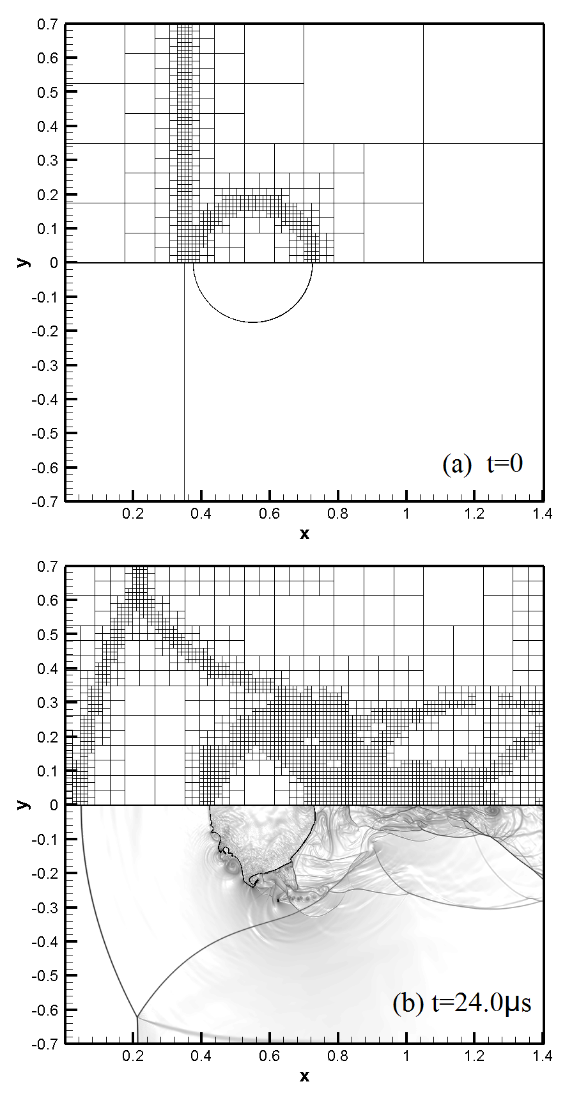ALPACA
Alpaca is a MPI-parallelized C++ code framework to simulate compressible multiphase flow physics. It allows for advanced high-resolution sharp-interface modeling empowered with efficient multiresolution compression. The modular code structure offers a broad flexibility to select among many most-recent numerical methods covering WENO/T-ENO, Riemann solvers (complete/incomplete), strong-stability preserving Runge-Kutta time integration schemes, level set methods and many more.
Open-Source:
Developed by: Nanoshock group @ AER/TUM
Associated Projects: High-fidelity large-scale CFD simulations on SuperMUC-NG: Improving accuracy and reproducibility of high-resolution schemes
AMR simulation environment for shock-driven flows with interfaces
Biomedical problems are often driven by fluid dynamics, as in vivo organisms are usually composed of or filled with fluids that (strongly) affected their physics. Additionally, fluid dynamical effects can be used to enhance certain phenomena or destroy organisms. As examples, we highlight the benign potential of shockwave-driven kidney-stone lithotripsy or sonoporation (acoustic cavitation of microbubbles) to improve drug delivery into cells. The underlying fluid dynamics events are shockwaves, i.e. discontinuities in the macroscopic fluid states that can lead to extreme temperatures, pressures and concentrations of energy. The violence and yet the spatial localization of shockwaves presents us with a unique potential for in situ control of fluid processes with surgical precision.
We have developed a multi-phase compressible fluid solver that can handle shockwaves efficiently and accurately [1, 3]. Using a level-set formulation to treat sharp interfaces and employing multi-resolution techniques [2] we can study complex shock bubble interactions. The multi-resolution approach detects passively (without user interaction) the most relevant regions within the computational domain and adapts the computational grid dynamically.
Parallelizing an adaptive multi-resolution (AMR) algorithm is very challenging due to the strong data compression and highly dynamic memory allocation. Within the KONWIHR II project we are improving the performance of the existing single-node version of the code and develop a generalized algorithm that can run on multi-node environments.
References
[1] Fu, L., Hu, X. Y., and Adams, N. A. 2016. A family of high-order targeted ENO schemes for compressible-fluid simulations. Journal of Computational Physics 305, 333–359.
[2] Han, L. H., Hu, X. Y., and Adams, N. A. 2014. Adaptive multi-resolution method for compressible multi-phase flows with sharp interface model and pyramid data structure. Journal of Computational Physics 262, 131–152.
[3] Hu, X. Y., Khoo, B. C., Adams, N. A., and Huang, F. L. 2006. A conservative interface method for compressible flows. Journal of Computational Physics 219, 2, 553–578.
Nils Hoppe, Stefan Adami, Prof. Nikolaus Adams





